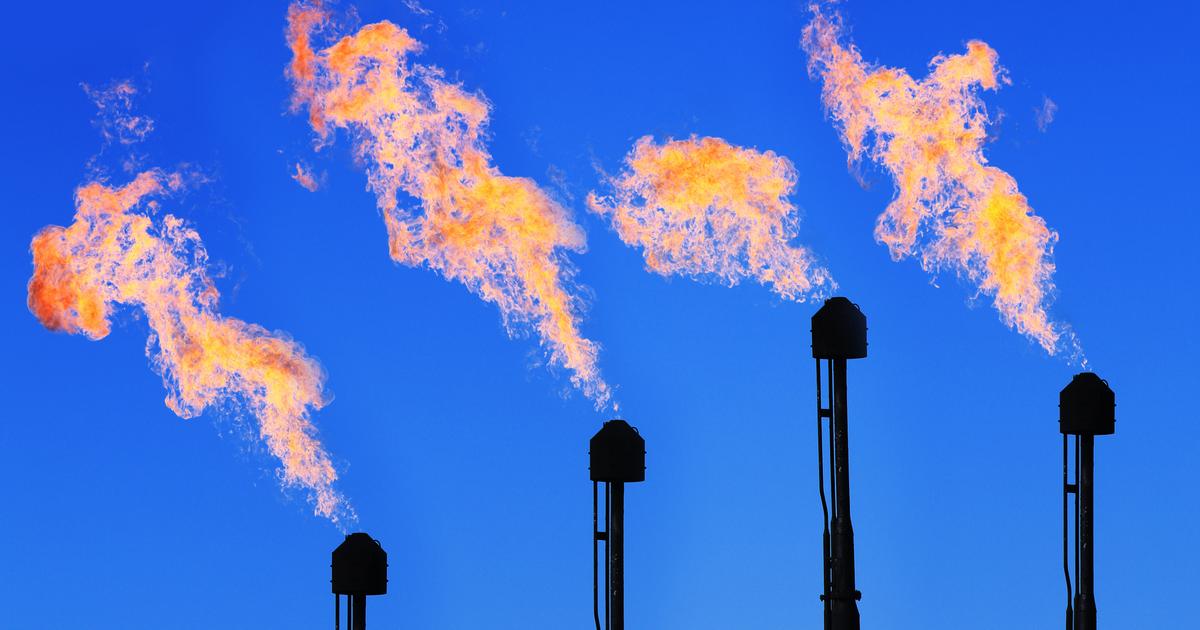Global methane emissions from the fossil fuel industry, mainly due to leaks of this powerful greenhouse gas, remained at record levels in 2023,
“for no reason”
since the solutions exist and are affordable, according to the published analysis this Wednesday by the International Energy Agency (IEA).
Energy production linked to oil, gas and coal
“resulted in around 120 million tonnes of methane emissions in 2023, a slight increase compared to 2022”
, estimates the IEA, which however forecasts a decrease very soon given the changes initiated in the sector and the commitments made at COP28.
“Another ten million tonnes”
come
from “bioenergy”
, such as wood burned for cooking stoves, adds the IEA in this 2024 edition of its
“
Global Methane Tracker
”
.
Methane, the second most important greenhouse gas after CO2, is the natural gas molecule, which escapes from gas pipelines, coal mines and our gas cookers, but also from cows, rice fields and waste.
Around 580 million tonnes of methane are emitted each year, 60% of which is attributable to human activity (mainly agriculture) and almost a third to natural wetlands.
Much warmer than CO2 but with a shorter lifespan (around ten years), it is responsible for around 30% of global warming since the industrial revolution.
Avoiding emissions has a strong short-term effect in the fight against global warming.
These methane emissions from the fossil industry remain close to the 2019 record and very far from the 75% reduction necessary by 2030 to meet the limit of 1.5°C of warming set by the Paris agreement.
“There is no reason for these emissions to remain so high
,” denounced Tim Gould, the chief economist of the IEA, during a press briefing.
In 2023,
“around 40% could have been avoided without net cost, the value of the methane captured”
and marketed being greater than the expenses to plug the leaks, explains the IEA.
Reducing by 75% would cost
“around $170 billion, or less than 5% of the fossil fuel industry’s revenues in 2023
,” adds the Agency.
Around two thirds of the methane emitted by the fossil fuel industry
“comes from only ten countries”
, underlined Christophe McGlade, energy expert at the IEA.
China is
“by far”
the leading emitter for methane from coal, the United States is in the lead for that linked to oil and gas,
“followed closely by Russia”
.
Also read COP28: why we urgently need to reduce methane leaks
Explosion of large fruits “detected by satellite”
Among the
“worrying trends”
, Christophe McGlade cites the large leaks
“detected by satellite”
which
“have increased by more than 50% compared to 2022”
, representing 5 million additional tonnes.
One of them, massive, in Kazakhstan, lasted around 200 days.
Despite everything, the IEA remains optimistic:
“the important policies and regulations announced in recent months, as well as the new commitments made at the COP28 climate summit in Dubai, may soon cause their decline
,” writes the institution, which has become a key player of the energy transition.
At COP28, 52 oil and gas companies committed to achieving
“near zero methane”
in their operations by 2030, under the eye of skeptical observers for the lack of precise plans.
More than 150 countries, including recently Azerbaijan, host of COP29, have also joined the
“
Global Methane Pledge
”
initiative , which aims to reduce these emissions by 30% between 2020 and 2030.
“If all these promises are perfectly fulfilled and in time, they would reduce emissions by around 50% by 2030
,” according to Christophe McGlade.
Except that these new commitments
“have not yet been supported by detailed plans”
, according to the analyst.
“2024 could mark a turning point
,” summarizes economist Tim Gould, because
“policies are starting to be put in place, greater transparency is taking hold, awareness is becoming widespread and we have a better ability to spot leaks. important”
to stop them.
The IEA, whose estimates exceed those of the United Nations by 50%, is also pleased to be able to count on
“a growing number of advanced satellites monitoring methane leaks, such as the MethaneSAT”
, successfully launched in early March by a rocket. SpaceX and controlled from New Zealand.

